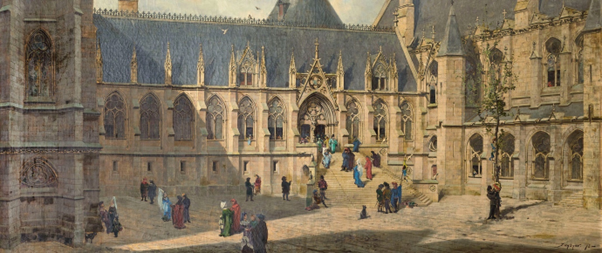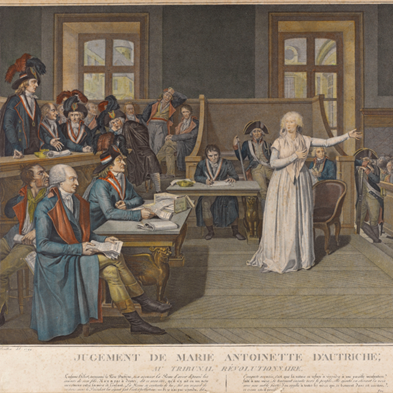6.2 La Conciergerie
Located in the heart of Paris, on the banks of the Seine, the Conciergerie is one of the oldest remains of the Palais de la Cité, residence of the kings of France in the Middle Ages.
Transformed into a prison for the Parliament of Paris towards the end of the 14th century (1500), the Conciergerie was a place of detention during the French Revolution. Its most famous prisoner was Marie-Antoinette. A commemorative chapel was built during the 19th century (1800) on the site of her cell.

Since the Gallo-Roman period, the Ile de la Cité has been home to a temple, the Notre-Dame cathedral, and a fortress. Residence of the Roman governors and then of the Frankish kings, the fortress became a palace with the Capetians, at the end of the 10th century (900).
Louis IX (1226 - 1270), the future Saint Louis, started the embellishment of the Palace. He built, the Sainte-Chapelle, monumental chapel of the palace, famous for its painted glasses.
From the 15th century until the Revolution, the Conciergerie was one of the most important prisons in Paris.
During the night of the 1st and 2nd August 1793, Marie Antoinette, who had been incarcerated for ten months in the Temple prison, was transferred to the Conciergerie. As soon as she arrived, Marie Antoinette was taken directly to the cell reserved for her. The former queen, was totally isolated from the other prisoners.

The trial of Marie Antoinette opened on the morning of October 14. In addition to the accusations of treason and spending national funds, Marie-Antoinette was accused of incest with her son, the young “Louis XVII”. Indignant, Marie-Antoinette “appealed to all mothers” and to their compassion. On October 16, at four o’clock in the morning, after 20 hours of debates, the verdict of death falls, followed by the execution at 12:15 am on the Place de la Révolution (now the Place de la Concorde).